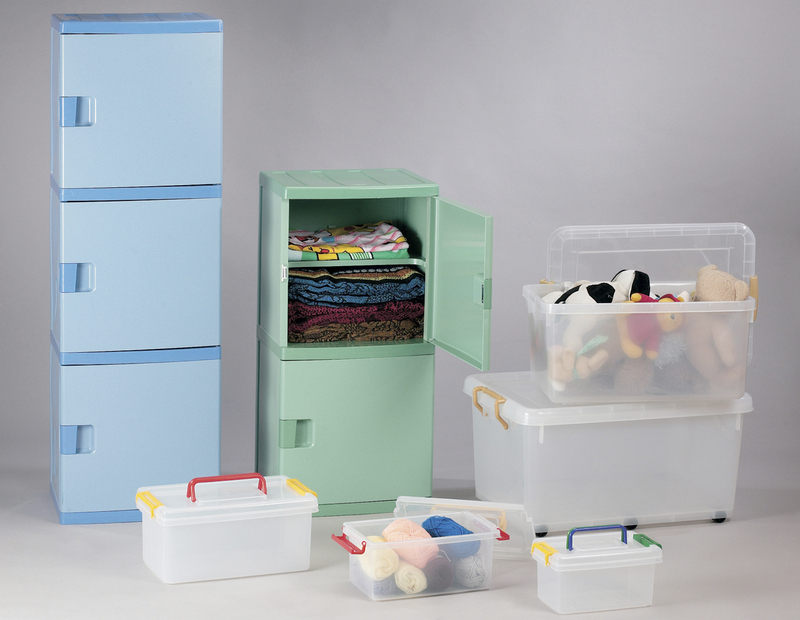Unpacking the Risks: DIY Piano Moving Challenges
The thought of moving a piano by yourself might cross your mind when you're facing a house move or rearranging living spaces. Pianos are elegant and treasured instruments, yet their sheer size, intricate design, and immense weight present a multitude of risks when handled without professional expertise. If you're considering a DIY piano moving project, it's essential to understand what you're getting into. This comprehensive guide uncovers the hidden and not-so-hidden challenges associated with moving a piano DIY-style and why hiring skilled movers is often the safer and smarter choice.

The Nature of Pianos: More Than Just Heavy Furniture
When thinking about moving, many people underestimate just how complex a piano is. Unlike most household furniture, pianos are finely-tuned instruments made from hundreds of delicate parts. A typical upright piano may weigh between 300 to 500 pounds, while a grand piano can exceed 1,200 pounds. But piano moving is not only about weight; it's also about shape, balance, sensitivity, and value.
Unique Construction and Fragility
- Thousands of Parts: A piano contains over 10,000 moving parts, most of which are finely regulated for optimal sound. Mishandling during a move can disrupt this precision.
- Sensitive Finishes: The outer wood finish and internal strings and hammers are highly sensitive to bumps, temperature, and humidity changes, making damage likely during a DIY move.
- Irregular Shapes: Grand pianos have wide, curved bodies with protruding legs, pedals, and a heavy lid, complicating safe maneuvering through doors and tight spaces.
Why DIY Piano Moving Is Risky
Attempting to move a piano by yourself may seem like a way to save money, but the reality is filled with multiple dangers that can quickly outweigh any perceived cost savings. Below we unpack the primary risks you need to consider before reaching for those moving straps and dollies.
1. Risk of Personal Injury
- Heavy Lifting: Improper lifting techniques can cause severe muscle strains, back injuries, and joint damage.
- Crushing Hazards: Pianos can shift or roll unexpectedly; if your hand or foot gets caught underneath, the consequences can be dire.
- Slips and Falls: Moving up or down stairs increases the risk of losing control of the piano, leading to falls and injuries.
- Lack of Protective Equipment: Professional movers use steel-toed boots, heavy-duty gloves, and safety harnesses--equipment most DIY movers lack.
2. Danger to the Piano
- Tuning and Structural Damage: Sudden jostles or knocks can disrupt the piano's delicate tuning or crack the soundboard, resulting in expensive repairs or irreversible harm.
- Scratches and Dents: Door frames, stair banisters, and even moving blankets can scuff, dent, or chip the piano's finish if not handled correctly.
- Internal Component Failure: Excessive vibrations or a sharp shock can dislodge hammers, keys, or strings, requiring specialist repairs.
3. Risks to Property
- Damaged Flooring: The weight and sharp corners of a piano can gouge hardwood floors or crack tiles if dropped or dragged.
- Wall and Doorway Damage: Navigating tight turns often leads to bumps and scrapes that damage paint, plaster, or woodwork.
- Risk to Other Furniture: In oversized or overfilled rooms, other furnishings can bear the brunt if the piano is dropped or loses balance.
Common DIY Piano Moving Mistakes
Even the most careful DIY enthusiasts often make errors when moving a piano. A thorough understanding of the most common mistakes will help you anticipate and avoid potential disasters.
Underestimating the Weight and Balance
- Improper Equipment: Using inadequate dollies or straps can result in loss of control.
- Too Few Helpers: A job that requires a team often gets attempted by just two people, drastically increasing the risk of dropping the instrument.
Poor Planning and Preparation
- Ignoring Measurements: Not measuring doorways, stairwells, or hallways can cause delays and potential for piano or property damage.
- Lack of Pathway Preparation: Failing to clear the route of obstacles like rugs or furniture creates tripping and collision hazards.
- No Protective Padding: Skipping the use of blankets, pads, and proper wrapping leaves the piano exposed to scratches and environmental changes.
Improper Lifting Techniques
- Lifting from Weak Points: Grabbing the keyboard cover, legs, or pedals instead of the main frame can break fragile components.
- Twisting Movements: Twisting or turning a piano too sharply can warp the internal structure, affecting sound quality.
The Unexpected Costs of DIY Piano Moving
The main appeal of a DIY piano move is saving money, but the reality often proves otherwise. Hidden expenses and losses can quickly escalate:
- Repair Bills: Fixing a damaged soundboard, action, or finish can range from hundreds to thousands of dollars.
- Tuning and Adjustments: Even a short move can knock your piano out of tune, requiring professional restoration.
- Medical Expenses: Injuries incurred during a move can lead to costly hospital or therapy bills.
- Insurance Gaps: Most homeowner policies (and moving truck coverage) do not fully cover DIY piano transportation accidents.
What About Insurance and Liability?
One of the most overlooked challenges in DIY piano moving is the lack of adequate insurance coverage. Professional movers are required by law to be licensed and insured, offering protection for both the instrument and your property. In contrast, most DIY moves are done at your own risk.
- Homeowner's Insurance Limitations: While some damages may be covered under certain policies, exclusions for "improper handling" or "negligent moving" are common.
- Rental Truck Insurance: Coverage often excludes items valued over a certain amount or those considered specialty items, such as pianos.
- Personal Liability: If you injure yourself or a helper, or cause significant property damage, legal and financial responsibility falls squarely on you.
Hidden Expertise: What Professional Piano Movers Do Differently
Moving companies specializing in pianos bring both skill and experience to the task--qualities critical for ensuring a safe, successful move. Professionals employ detailed processes that prevent the very challenges DIY movers face:
- Specialized Equipment: From heavy-duty piano dollies to sturdy straps and protective padding, pros use tools designed for safe piano transport.
- Route Planning: Movers meticulously plan the pathway, assessing tight corners, stairs, doorways, and flooring to prevent mishaps.
- Team Coordination: A coordinated team communicates and lifts in unison, reducing the risk of drops and injuries.
- Disassembly and Reassembly: For grand pianos, removing legs, pedals, and even the lid is performed with care, ensuring all parts are transported and reattached correctly.
- Climate-Controlled Vehicles: Music professionals avoid temperature and humidity swings that could harm the instrument during transit.
- Insurance Protection: Comprehensive coverage ensures that, in the unlikely event of damage, your investment is protected.
Signs That Professional Piano Movers Are Essential
While some small upright pianos might be moved short distances with exceptional care and planning, there are clear signs that call for hiring experts:
- Grand or Baby Grand Pianos: Larger instruments require both skill and specialized equipment for safe handling.
- Multiple Stairs, Tight Turns, or Narrow Doorways: Professional oversight minimizes the risk of damage when navigating architectural challenges.
- Valuable, Antique, or Sentimental Instruments: For irreplaceable pianos, certified movers offer peace of mind.
- Lack of Helpers or Experience: If you don't have several strong, knowledgeable friends, the risk factor soars.
- Long-Distance Moves or Unpredictable Weather: Climate-controlled transport ensures the piano arrives in top condition.
How to Prepare If You Still Plan a DIY Piano Move
If you are determined to move your piano by yourself, meticulous planning and investment in resources are crucial. Follow this checklist to minimize risks:
- Assess the Piano's Weight and Dimensions. Confirm if your chosen route is feasible for its size and shape.
- Gather a Capable Team. At least three to four strong individuals with moving experience are recommended.
- Invest in Proper Equipment. Rent or buy a professional-grade piano dolly, moving straps, and abundant padding.
- Clear and Prepare the Route. Remove any furniture, rugs, or loose items along the pathways.
- Disassemble Carefully (If Appropriate). Remove what you safely can--such as music stands or pedals--label and pack them securely.
- Use Proper Lifting Techniques. Lift with your legs, not your back, and never twist while carrying the load.
- Protect the Piano and Surroundings. Wrap your piano in thick moving blankets and secure with straps. Cover door frames and corners with pads.
- Move Slowly and Steadily. Constantly communicate with your team and take breaks as needed.
- Secure the Piano in Transit. In the moving vehicle, anchor the piano tightly to avoid shifting during transport.
- Retune Post-Move. Schedule a professional tuning session to restore optimal sound quality after the relocation.

Frequently Asked Questions about DIY Piano Moving Challenges
Can I move a piano with a few strong friends?
It depends on the type of piano, the distance, the obstacles involved, and your collective experience. Upright pianos may be managed in simple, single-story moves, but grand pianos or stairs multiply risks exceptionally.
What's the most common damage to pianos during a DIY move?
Scratches, broken legs, bent pedals, and knocked-out-of-tune soundboards are among the most frequent issues. Internal mechanisms are also vulnerable to shocks and vibrations.
Do I need special insurance for a piano move?
Yes. Many insurance policies don't cover damage during transport, especially when handled by the owner. Professional movers typically include specific coverage for musical instruments.
Conclusion: Think Twice Before a DIY Piano Move
Moving a piano yourself poses serious challenges--including the risk of personal injury, damage to the instrument and your home, unexpected costs, and lack of adequate insurance. The risks often outweigh the cost savings, especially given the value and fragility of your piano.
While some simple moves may be feasible for those with careful planning, ample manpower, and physical strength, most situations truly call for the expertise of professional piano movers. Their experience, equipment, and insurance offer peace of mind that your cherished instrument will reach its new home safe and sound.
If your piano is worth protecting--as an investment, an heirloom, or the centerpiece of your living room--take the safe route. Let trained professionals handle the move and enjoy your piano for years to come, unmarred and perfectly in tune.
Interested in learning more about safe piano moving or looking for trusted local professionals? Start your research well in advance and weigh the true costs of a DIY piano move before lifting a finger!